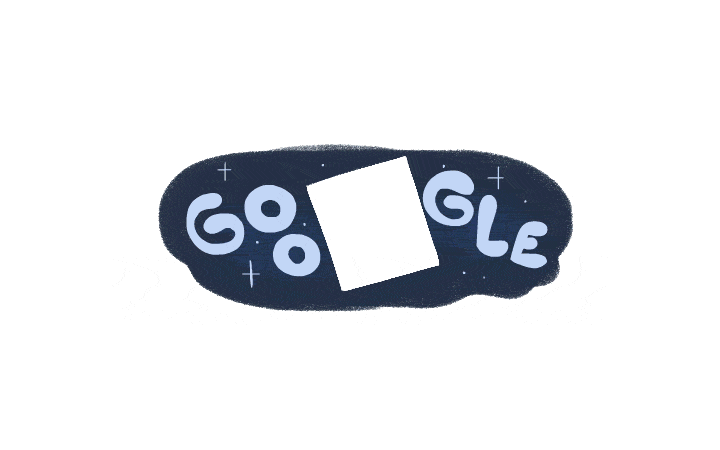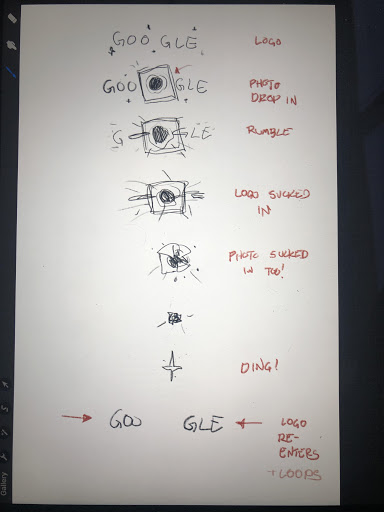Fall Into the Google Doodle of a Black Hole

The Event Horizon Telescope (EHT) needed two years to create the first-ever image of a faraway black hole, but a new Google Doodle that commemorates the landmark achievement came together in a matter of hours.
Google Doodle artist Nate Swinehart was sketching scenes for a black hole animation while in his car on the way to work, at the same time as EHT representatives prepared to announce their landmark achievement, a Google representative told Live Science in an email.
Executing the artwork took about 2.5 hours, and the animation was online within 6 hours after Swinehart submitted the proposal by email, according to Google. [Why Is the First-Ever Black Hole Photo an Orange Ring?]
Much as a black hole's gravitational pull sucks in everything nearby, in the animation, the "Google" letters are stretched thin and then swallowed by the inexorable tug of a black hole positioned at the center.
The EHT's black hole picture combined data gathered by about 200 researchers using a network of eight ground-based radio telescopes in locations around the world. In the image — which appears amid the Google Doodle — the M87 black hole's shadow is framed against a surrounding cloud of superheated dust and gas. A color map applied by the scientists tints the hottest areas yellow, while less-energetic regions shade into red.
This isn't the first time that Swinehart has created a Google Doodle in less than a day to spotlight an important astrophysics findings. In September 2015, he designed a Doodle following a report of liquid water flowing on Mars, and in February 2017, his Doodle celebrated NASA 's discovery of seven Earth-size exoplanets orbiting a star about 235 trillion miles (378 trillion kilometers) away.
"These achievements are incredible, inspiring and often mind-boggling," Swinehart said in a statement.
Get the world’s most fascinating discoveries delivered straight to your inbox.
"It's a huge opportunity as an artist to take the homepage space and make something small and charming that piques people's interest in the discovery."
- 3 Huge Questions the Black Hole Image Didn't Answer
- 9 Weird Facts About Black Holes
- The 12 Strangest Objects in the Universe
Originally published on Live Science.

Mindy Weisberger is a science journalist and author of "Rise of the Zombie Bugs: The Surprising Science of Parasitic Mind-Control" (Hopkins Press). She formerly edited for Scholastic and was a channel editor and senior writer for Live Science. She has reported on general science, covering climate change, paleontology, biology and space. Mindy studied film at Columbia University; prior to LS, she produced, wrote and directed media for the American Museum of Natural History in NYC. Her videos about dinosaurs, astrophysics, biodiversity and evolution appear in museums and science centers worldwide, earning awards such as the CINE Golden Eagle and the Communicator Award of Excellence. Her writing has also appeared in Scientific American, The Washington Post, How It Works Magazine and CNN.



